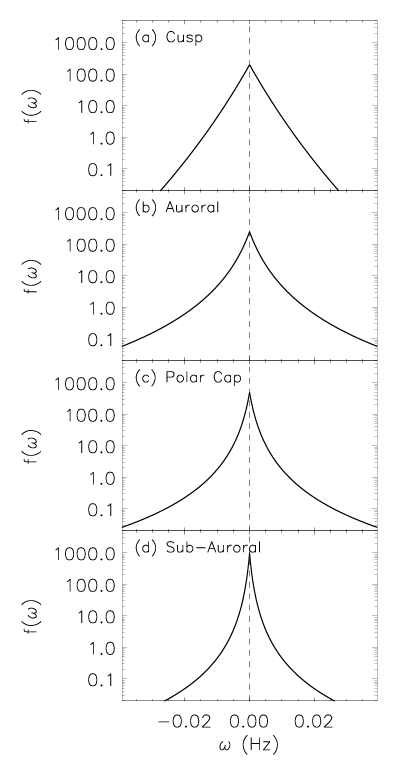MIST
Magnetosphere, Ionosphere and Solar-Terrestrial
Characterising meso-scale ionospheric flow structures
By Gareth Chisham (British Antarctic Survey)
Measuring and understanding ionospheric plasma flow vorticity aids the study of ionospheric plasma transport processes, such as convection and turbulence, which form an important component of magnetosphere to atmosphere space weather models. This plasma flow is dominated by the large-scale convection driven by solar wind-magnetosphere-ionosphere coupling.
This study (https://doi.org/10.1029/2024JA032887) exploits a recently-developed technique that allows the removal of this large-scale component from probability density functions (PDFs) of ionospheric vorticity measured by the Super Dual Auroral Radar Network (SuperDARN). Following this removal, the residual PDFs are symmetric double-sided functions that describe the meso-scale vorticity component that derives from processes below the large scale, such as turbulence. The character of this meso-scale component varies with location in the polar ionosphere, as shown in the figure. The ability to characterise the meso-scale flows in different regions helps to improve our understanding of the meso-scale processes occurring there. Models of ionospheric plasma flow are an important component in larger-scale system models. However, at the present time, these plasma flow models only consider the large-scale convection flow. Understanding, and being able to model, meso-scale ionospheric vorticity will help improve the accuracy of these models.

This figure presents schematic representations of the typical probability density functions (PDFs – f(ω))
of meso-scale ionospheric vorticity (ω) that are observed in different regions of the polar ionosphere:
(a) Dayside cusp; (b) Auroral region; (c) Polar cap; (d) Sub-auroral region.
Publication:
Chisham, G., and Freeman, M.P., The spatial variation of large- and meso-scale plasma flow vorticity statistics in the high-latitude ionosphere and implications for ionospheric plasma flow models. J. Geophys. Res., 129, e2024JA032887, 2024.
https://doi.org/10.1029/2024JA032887